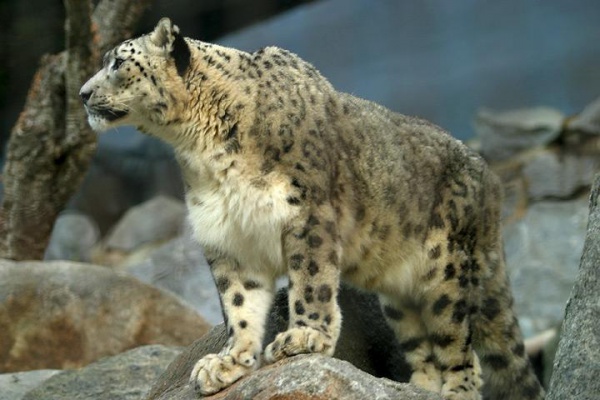Facts About Snow leopard
The snow leopard, also known as the ounce, is a majestic big cat inhabiting the rugged mountain ranges of Central and South Asia. Unfortunately, it is listed as Vulnerable on the IUCN Red List, with fewer than 10,000 mature individuals remaining in the wild. These beautiful creatures face significant threats from poaching and habitat destruction due to infrastructure development.
Snow leopards reside in alpine and subalpine zones, typically at elevations between 3,000 and 4,500 meters. Their range extends from eastern Afghanistan and the Himalayas to southern Siberia, Mongolia, and western China.
Originally classified in its own genus, Uncia, the snow leopard is now considered part of the Panthera genus. Although there were once believed to be two subspecies based on physical differences, genetic studies have not confirmed this, resulting in their classification as a single species. Phylogenetic research suggests that snow leopards diverged from tigers around 3.7 to 2.7 million years ago.
These cats have whitish to gray fur adorned with black spots and rosettes, perfectly suited for their cold, mountainous homes. They possess several adaptations for their chilly environment, such as small rounded ears to reduce heat loss and broad paws that act like snowshoes. Their diet mainly includes wild prey like Himalayan blue sheep and Himalayan tahr, but they also consume smaller animals like marmots.
Snow leopards are solitary and elusive, most active at dawn and dusk. They mark their territories with scent to communicate and navigate. Renowned for their hunting prowess, they ambush prey from above, chasing them down steep slopes with incredible agility. These cats reach sexual maturity at two to three years and can have litters of one to five cubs.
The snow leopard's survival is threatened by poaching for their skins and body parts, and habitat loss driven by climate change. However, many organizations and governments are working diligently to protect them. The Global Snow Leopard and Ecosystem Protection Program, for instance, is dedicated to ensuring the long-term survival of these cats and their habitats.
Snow leopards hold cultural significance and are political symbols in several countries, often appearing in heraldry and emblems. Their elusive nature and remote habitats make documentary footage rare, but various media projects have captured their beauty and highlighted conservation efforts. Protecting snow leopards is crucial, not just for their sake, but for the health of the entire ecosystem they inhabit.

 China
China